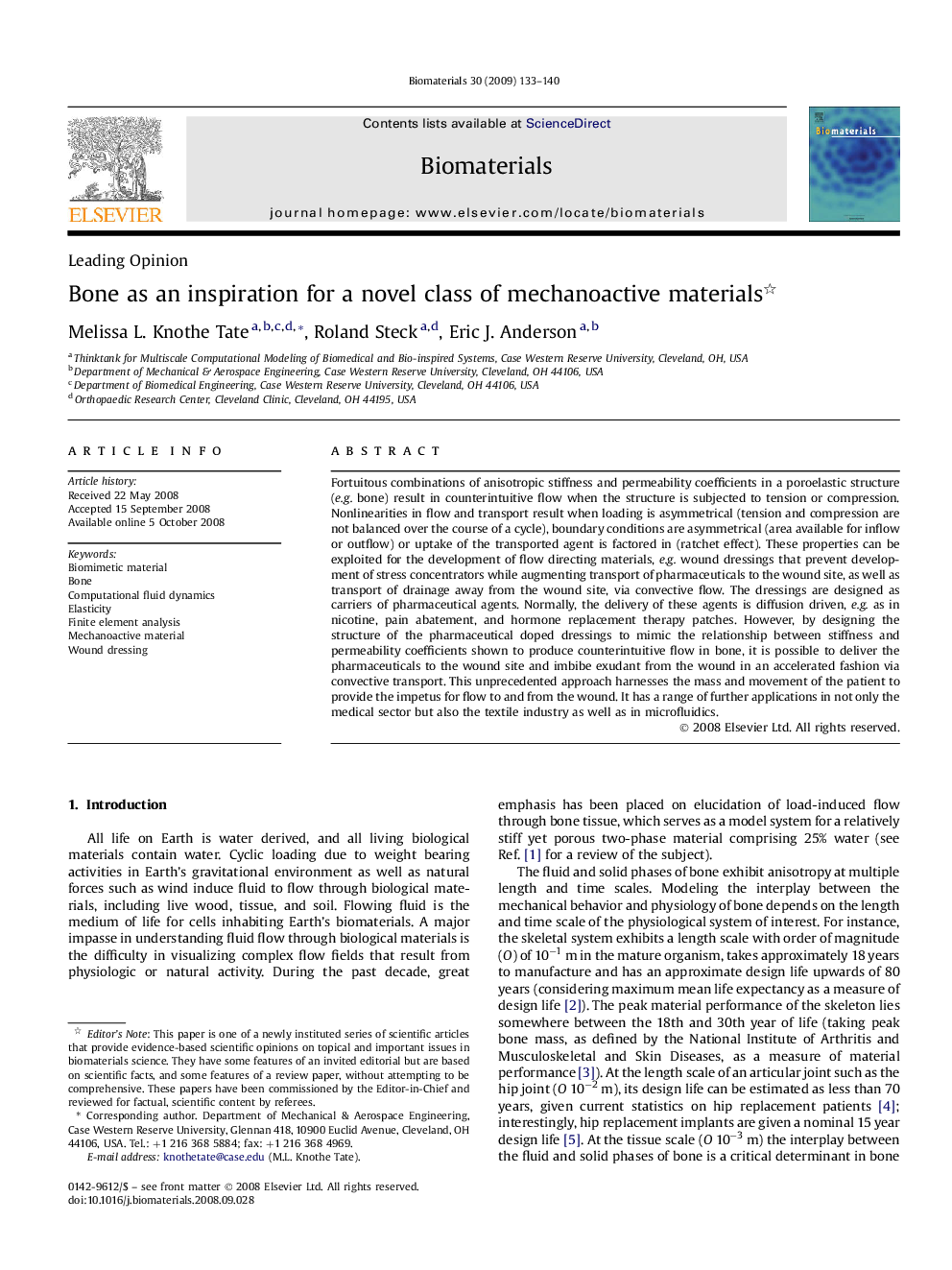| کد مقاله | کد نشریه | سال انتشار | مقاله انگلیسی | نسخه تمام متن |
|---|---|---|---|---|
| 10934 | 709 | 2009 | 8 صفحه PDF | دانلود رایگان |

Fortuitous combinations of anisotropic stiffness and permeability coefficients in a poroelastic structure (e.g. bone) result in counterintuitive flow when the structure is subjected to tension or compression. Nonlinearities in flow and transport result when loading is asymmetrical (tension and compression are not balanced over the course of a cycle), boundary conditions are asymmetrical (area available for inflow or outflow) or uptake of the transported agent is factored in (ratchet effect). These properties can be exploited for the development of flow directing materials, e.g. wound dressings that prevent development of stress concentrators while augmenting transport of pharmaceuticals to the wound site, as well as transport of drainage away from the wound site, via convective flow. The dressings are designed as carriers of pharmaceutical agents. Normally, the delivery of these agents is diffusion driven, e.g. as in nicotine, pain abatement, and hormone replacement therapy patches. However, by designing the structure of the pharmaceutical doped dressings to mimic the relationship between stiffness and permeability coefficients shown to produce counterintuitive flow in bone, it is possible to deliver the pharmaceuticals to the wound site and imbibe exudant from the wound in an accelerated fashion via convective transport. This unprecedented approach harnesses the mass and movement of the patient to provide the impetus for flow to and from the wound. It has a range of further applications in not only the medical sector but also the textile industry as well as in microfluidics.
Journal: Biomaterials - Volume 30, Issue 2, January 2009, Pages 133–140